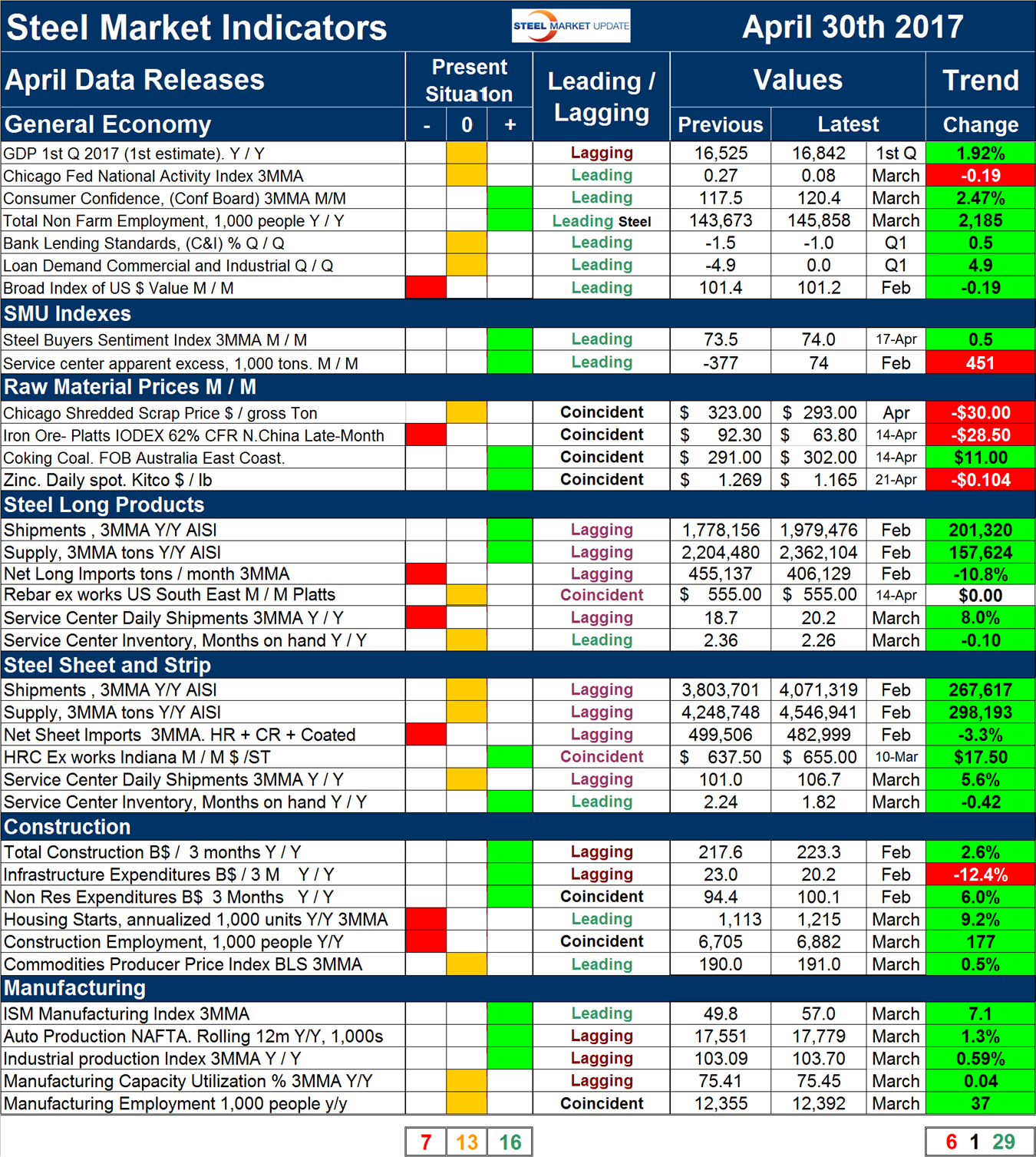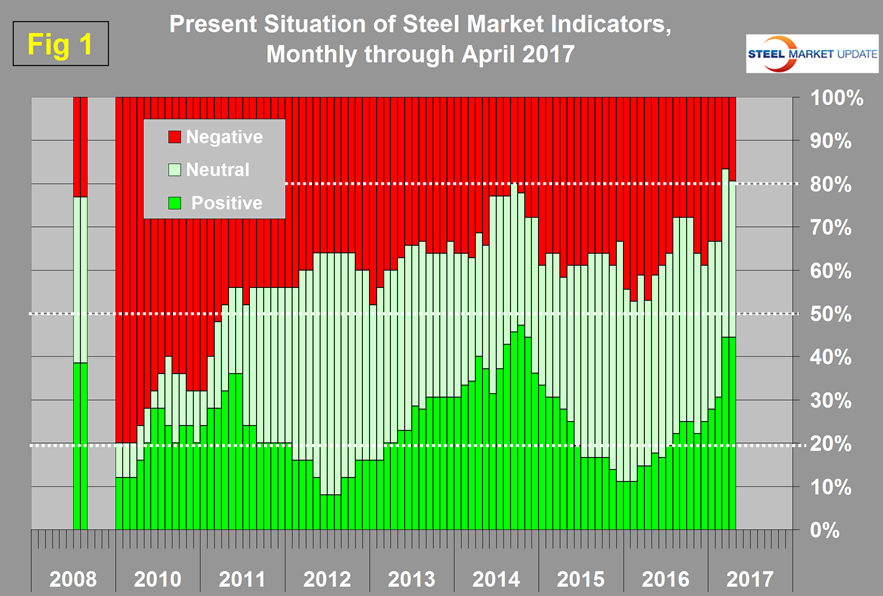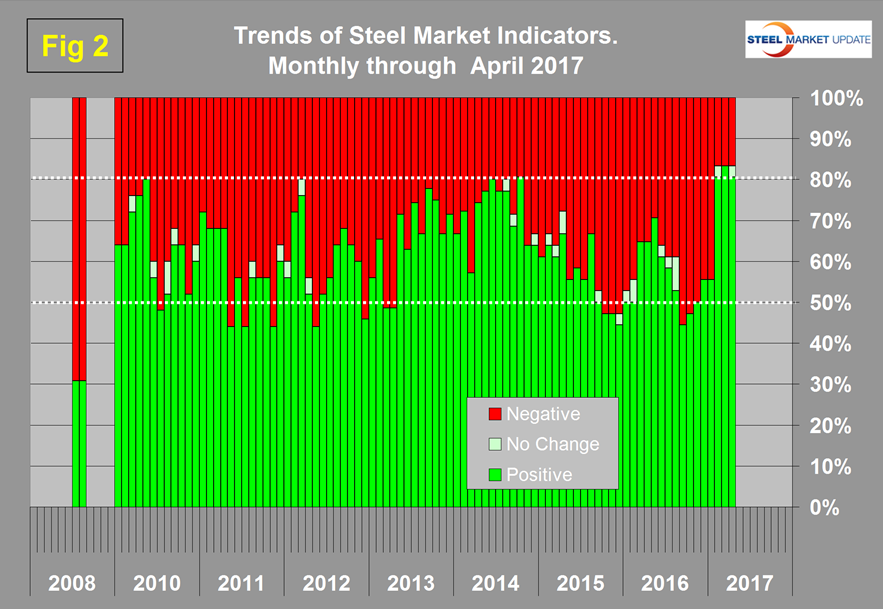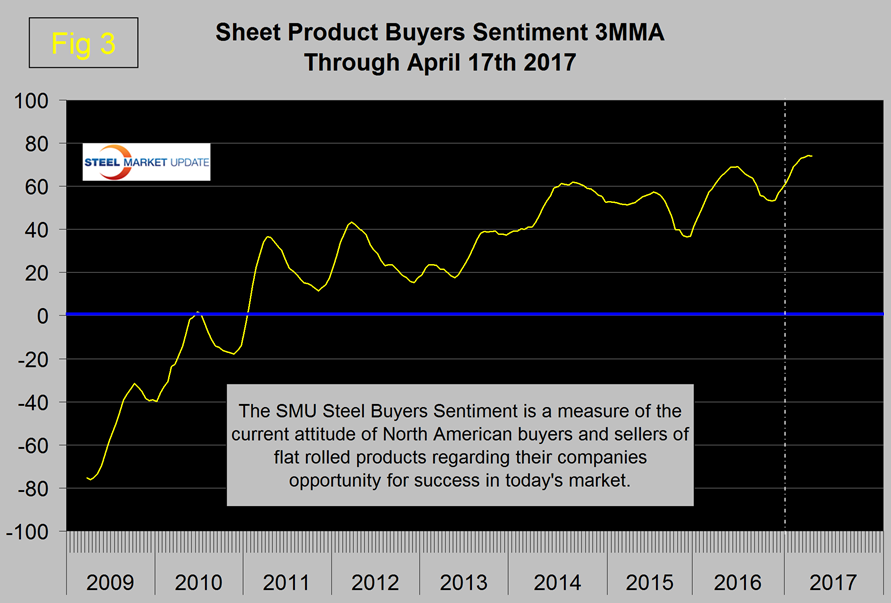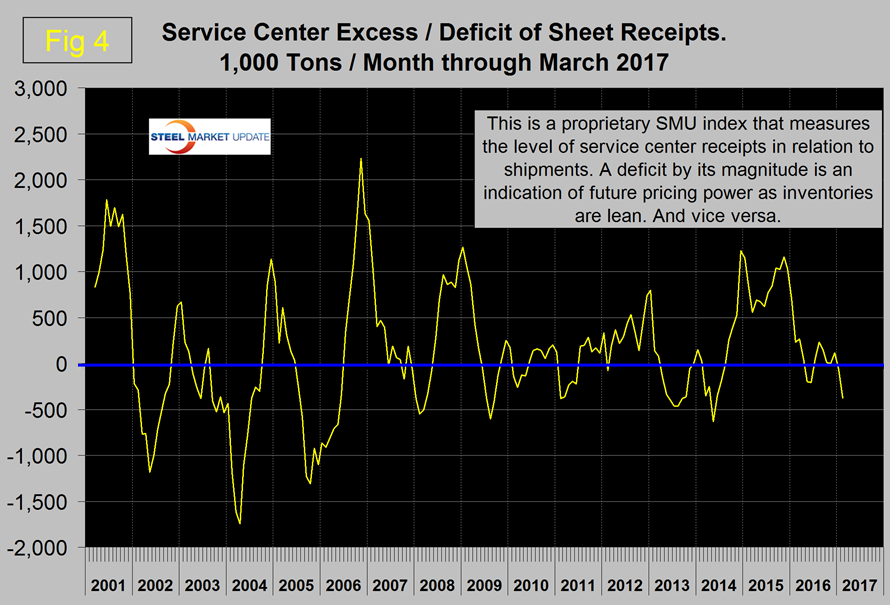SMU Data and Models

Key Market Indicators through April 30, 2017
Written by Peter Wright
May 3, 2017
An explanation of the Key Indicators concept is given at the end of this piece for those readers who are unfamiliar with it. This will explain the difference between our view of the present situation which is subjective and our analysis of trends which is based on the latest facts available. We now have two great months of present situation assessment and three of excellent trends in our pockets. Both are at higher levels than any since we began this analysis in January 2010.
![]() The total number of indicators considered in this analysis is 36.
The total number of indicators considered in this analysis is 36.
Please refer to Table 1 for the view of the present situation and the quantitative measure of trends. Readers should regard the color codes in the present situation column as a quick look at the current market condition. The “Trend” columns of Table 1 are also color coded to give a quick visual appreciation of the direction in which the market is headed. All data included in this table was released in April, the month or specific date to which the data refers is shown in the second column from the far right and all data is the latest available as of April 30th, 2017.
Present Situation
There was an increase of one indicator that we consider to be negative in April. We currently view 16 of the 36 indicators as positive, 13 as neutral and 7 as negative. Our intent in using the word neutral is to say that this indicator is considered to be in the mid-range of historical data. The change this month was in the price of iron ore (62 percent fines delivered N. China) which had fallen to $63.80/dmt on April 14th. There were no other changes in our view of the present situation in April. On Friday the Bureau of Economic Analysis released their preliminary estimate of GDP growth in Q1 2017. The headline report of GDP growth in Q1 came in at 0.7 percent a decline from 3.53 percent in the third quarter and 2.08 percent in the Q4 2016. On a y/y basis GDP was up by 1.92 percent in Q1 which was close to the 1.94 percent in Q4 2016 and close to the 2.08 percent average in 29 quarters since Q1 2010. Therefore we conclude that in recent quarters the growth of US GDP is in line with its average for the last sixteen years.
Figure 1 shows our monthly assessment of the present situation since January 2010 on a percentage basis.
The number of indicators classified as positive peaked at 47.2 percent in October 2014 and steadily declined to 11.1 percent in the three months through January 2016. Since February 2016 there was a steady increase in the number of indicators that we consider to be positive which reached 44.4 percent at the end of both March and April 2017. The combination of positive and neutral indicators at the end of March was the highest ever at 83.3 percent.
In the General Economy section, the only indicator that we regard as a negative driver is the value of the US $ which by virtue of its strength is increasing net imports across the whole economy. The sheet market is better than that of long products which continue to suffer a low shipment volume from service centers. Both steel sectors continue to have a historically high level of net imports.
Trends
Most values in the trends columns are three month moving averages to smooth out what can be very erratic monthly data. The proportion of indicators trending positive through April 30th was 80.6 percent (29 of 36). This followed March at 83.3 percent, which was the best result since our data was first compiled. In the four months October through January there was a steady improvement followed by a surge in February that was sustained in March and April. Figure 2 shows the trend of the trends and the pre-recession situation at the far left of the chart.
In August 2008 over 2/3 (69.2 percent) of our indicators were trending negative and the steel market crashed in September of that year.
Trend changes in the individual sectors since the end of February are described below together with some general comments. (Please note in most cases this is not April data but data that was released in April for previous months.)
In the general economy, the Chicago Fed. National Activity Index reversed course and trended negative though it was still above the 50 threshold which suggests that economic growth is better than the historical norm. In March this indicator had its best value since December 2014. The CFNAI is a weighted average of 85 existing monthly indicators of national economic activity. In the SMU index section, steel buyers sentiment declined very slightly from its all time high in Mid march of 74.17 to 70.0 in Mid April (Figure 3) and service center excess of sheet products became positive in March after being in deficit in January and February.
This is a proprietary SMU calculation. We regard an inventory deficit to be positive in terms of pricing power and in March this was not the case with a surplus 451,000 tons (Figure 4).
In the raw materials section three of the four materials that we track reversed direction. Scrap and iron ore both declined after rising in March, coke reversed course with an explosive price increase driven by supply side problems as cyclone Debbie barreled down the east coast of Australia. The price of zinc declined for the second successive month to $1.165/lb. on April 24th. We regard rising raw materials prices as positive and indicative of a strengthening market. In the sheet and strip section, all indicators trended positive and in long products all trended positive except the price of rebar which was unchanged. In the construction sector there were no trend changes with all except infrastructure expenditures trending positive. In manufacturing all indicators trended positive which was an improvement from our March report when capacity utilization trended negative.
We believe a continued examination of both the present situation and direction is a valuable tool for corporate business planning.
Explanation: The point of this analysis is to give both a quick visual appreciation of the market situation and a detailed description for those who want to dig deeper. It describes where we are now and the direction in which the market is headed and is designed to describe the market on a specific date. The chart is stacked vertically to separate the primary indicators of the general economy, of proprietary Steel Market Update indices, of raw material prices, of both sheet and long product market indicators and finally of construction and manufacturing indicators. The indicators are classified as leading, coincident or lagging as shown in the third column.
Columns in the chart are designed to differentiate between where the market is today and the direction in which it is headed. Our evaluation of the present situation is subjectively based on our opinion of the historical value of each indicator. There is nothing subjective about the trends section which provides the latest facts available on the date of publication. It is quite possible for the present situation to be predominantly red and trends to be predominantly green and vice versa depending on the overall situation and direction of the market. The present situation is sub-divided into, below the historical norm (-) (OK), and above the historical norm (+). The “Values” section of the chart is a quantitative definition of the market’s direction. In most cases values are three month moving averages to eliminate noise. In cases where seasonality is an issue, the evaluation of market direction is made on a year over year comparison to eliminate this effect. Where seasonality is not an issue concurrent periods are compared. The date of the latest data is identified in the third values column. Values will always be current as of the date of publication. Finally the far right column quantifies the trend as a percentage or numerical change with color code classification to indicate positive or negative direction.

Peter Wright
Read more from Peter WrightLatest in SMU Data and Models

SMU Survey: Sheet lead times ease further, plate hits one-year high
Steel buyers responding to this week’s SMU market survey report a continued softening in sheet lead times. Meanwhile, plate lead times have moderately extended and are at a one-year high.

SMU Survey: Buyers report more price flexibility from mills
Nearly half of the steel buyers responding to this week’s SMU market survey say domestic mills are showing increased willingness to negotiate pricing on new spot orders. This marks a significant shift from the firmer stance mills held in prior weeks.
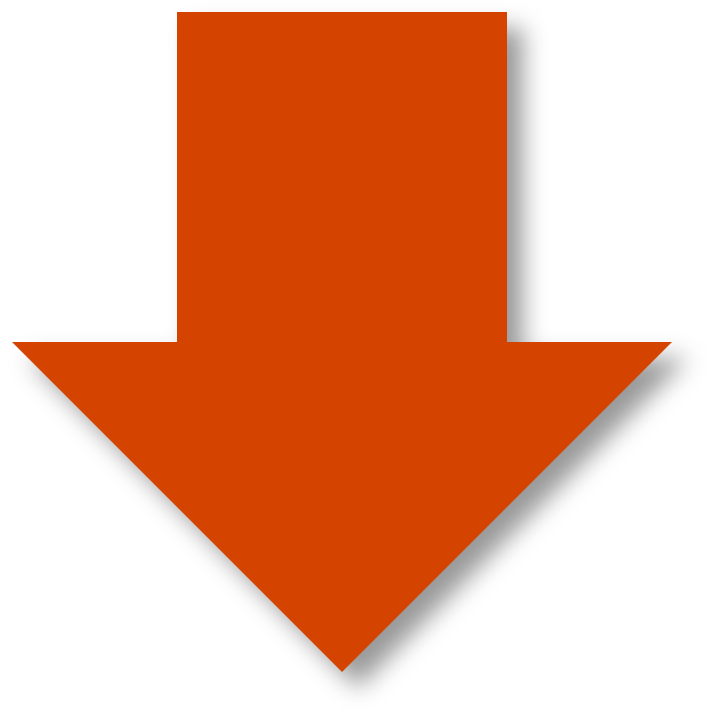
SMU Survey: Buyers’ Sentiment Indices fall
Current Sentiment Index dropped six points to +42 this week compared to two weeks earlier. It has fallen in every successive survey since reaching a 2025 high of +66 on Feb. 19.

March service center shipments and inventories report
Steel service center shipments and inventories report through March 2024.

Apparent steel supply contracts in February
The amount of finished steel that entered the US market in February receded from January’s peak, according to our analysis of Department of Commerce and American Iron and Steel Institute (AISI) data.

